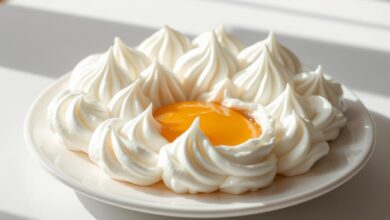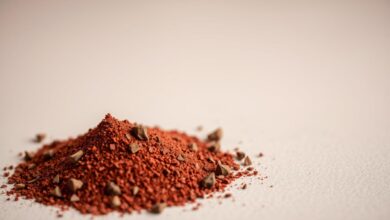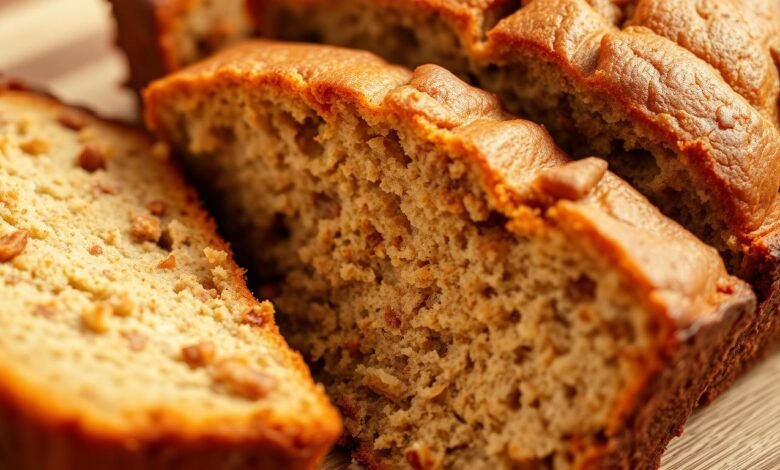
You know the moment—spots appear on the peel and you feel a little panic about wasting perfectly good fruit. You want a loaf that tastes like banana and holds together when you slice it. This guide meets you there with warmth and a clear plan.
This banana bread recipe focuses on the simple rules that make a loaf tender: very ripe fruit, brown sugar for depth, butter for a soft crumb, and a steady 350°F bake in a greased 9×5-inch pan. We layer tested tweaks—yogurt or sour cream, lower rack placement, and a foil tent—to keep a super moist banana bread without over-browning.
You’ll get easy-to-use tips on ripening fruit fast, freezing extras, and testing doneness with a toothpick. By the time you finish this short walkthrough, you’ll feel ready to bake a loaf that tastes bakery-level every time.
Key Takeaways
- Use very ripe fruit and brown sugar for the best flavor.
- Butter plus a dollop of yogurt or sour cream keeps the crumb tender.
- Bake at 350°F in a greased 9×5 pan; test with a toothpick.
- Lower the rack and tent with foil to prevent over-browning.
- Rapidly ripen fruit in a 250°F oven for 15–20 minutes if needed.
Why You’ll Love This Moist Banana Bread
Expect a loaf that stays soft for days and carries a clear, balanced fruit flavor on every bite.
Super moist texture that stays tender for days. A mix of brown sugar and butter locks in moisture and creates a soft crumb. Add a spoonful of sour cream or plain yogurt to increase plushness without weighing the loaf down.
Big banana flavor with balanced sweetness. Use very ripe bananas for concentrated fruit aroma. That lets you cut back on extra sugar while keeping the flavor bright and natural.
- You’ll get a tender crumb that slices neatly for breakfasts or gifts.
- Flavor deepens after a day at room temperature—many bakers prefer it on day two.
- The batter is forgiving, so home ovens produce reliable results without gummy centers.
- Adaptable to add-ins like nuts or chocolate without harming the texture.
moist banana bread
Nail the oven temperature and rack placement, and the center will finish without drying out.
Bake at 350°F for 55–65 minutes in a greased 9×5-inch pan. Position the rack slightly lower so the top colors slowly. Check with a toothpick; you want a few moist crumbs, not a wet smear.
Mix just until combined. Overmixing activates gluten and makes the crumb tough. Use brown sugar and very ripe fruit to lock in natural sweetness and extra tenderness.
If the top browns too fast, tent loosely with foil halfway through the total time. Let the loaf rest in the pan for 10 minutes, then move it to a wire rack to finish cooling. Chill slightly before slicing to get neat cuts.
Store at room temperature in an airtight container to preserve texture and flavor. These simple steps give you consistent results: a loaf that stays soft, slices cleanly, and tastes deeply banana-forward over time.
| Practice | Why it matters | Expected result | Timing |
|---|---|---|---|
| 350°F, 9×5 pan | Even heat for a full set | Cooked center without dry edges | 55–65 min |
| Lower rack + foil tent | Slower top color, prevents burning | Golden top, set interior | Tent at 30–35 min |
| Brown sugar + very ripe fruit | Extra moisture and caramel flavor | Tender crumb and rich flavor | Ingredient choice |
Quick Ingredient Snapshot
Gather the simple pantry staples that make a reliably tender loaf and keep prep fast.
Core ingredients: very ripe bananas, softened butter, brown sugar, eggs, all-purpose flour, baking soda, salt, and vanilla. Aim for about 1.5 cups of mashed fruit (roughly 3–4 bananas) so the crumb stays soft without getting heavy.
Why each matters: brown sugar adds depth and extra moisture, eggs bind the mixture, and salt brightens flavors. Whisk flour with baking soda and salt first to disperse leavening evenly.
Optional add-ins
- Walnuts or pecans for crunch.
- Chocolate chips or chopped chocolate for pockets of sweetness.
- Raisins if you want chew and extra fruit notes.
If you prefer a plusher loaf, stir in about 1/3 cup sour cream or yogurt. Measure flour by spooning into the cup and leveling to avoid packing, which can make the loaf dense. Keep vanilla handy to amplify the banana and brown sugar aroma.
| Ingredient | Purpose | Amount (standard loaf) |
|---|---|---|
| All-purpose flour | Structure | 1 3/4 cups (spoon & level) |
| Baking soda | Leavening | 1 tsp |
| Very ripe bananas | Flavor & moisture | 1.5 cups mashed (3–4 bananas) |
Pan, Tools, and Prep
Start with a calm station and the right gear to make baking easier and more reliable.
Grease a 9×5-inch loaf pan and preheat the oven to 350°F. Position the rack on the lower third so the top browns slowly and the center finishes evenly.
Gather a large mixing bowl, a sturdy spatula, and either a hand or stand mixer for creaming. A whisk works fine if you prefer to keep things simple.
Soften butter and bring eggs and dairy to room temperature before you begin. This helps the batter emulsify and produces a tender crumb for your bread.
- Line the pan with parchment for extra insurance when releasing the loaf.
- Keep a toothpick handy to check doneness during the last few minutes of baking.
- Have a wire rack ready so the loaf cools fully without steaming the bottom.
| Tool | Purpose | Tip |
|---|---|---|
| Loaf pan | Shape and bake | Grease well or use parchment |
| Mixer or whisk | Combine ingredients | Cream butter & sugar for light texture |
| Wire rack | Cooling | Prevents soggy bottom |
Step-by-Step: Make the Batter Like a Pro
Begin with room-temperature ingredients and a clear plan to keep the batter light and even.
Cream butter and sugar; add mashed bananas and eggs
Cream softened butter with brown sugar in a large bowl until smooth and slightly fluffy. This traps tiny air pockets that help the loaf rise and stay tender.
Mash very ripe bananas until mostly smooth with small chunks. Use a fork, a hand mixer, or a stand mixer on low to save time.
Beat in eggs one at a time, mixing after each addition to build a stable batter base.
Whisk dry ingredients: flour, baking soda, salt
In a separate bowl, whisk the all-purpose flour with baking soda and salt. This spreads the leavening evenly and avoids pockets of soda.
Combine wet and dry; add vanilla and mix-ins
Add the dry ingredients to the wet in two additions, mixing gently and stopping when no dry streaks remain. Overmixing activates gluten and makes quick breads tough.
Stir in vanilla to lift the banana flavor, then fold in chocolate chips or nuts if you like. Scrape the bowl so there are no hidden dry bits at the bottom.
- Smooth the top in the pan for even baking.
- Resist adding extra liquid; the bananas release moisture as the loaf bakes.
- If you want a crackly top, sprinkle a little brown sugar before baking.
| Step | Why it matters | Tip |
|---|---|---|
| Cream butter & sugar | Lightens crumb | Use room-temp butter |
| Mash bananas | Provides moisture & flavor | Leave a few small chunks |
| Fold in mix-ins | Add texture | Fold gently to avoid deflation |
Bake Time, Doneness, and Cooling
Preheat the oven to the right temperature and use rack placement to protect the top while the center sets.
Set the oven to 350°F and move the rack to the lower third. Slide the greased 9×5 pan onto that rack so heat reaches the middle without over-coloring the top.
Bake for about 55–65 minutes. That is roughly an hour, but your oven and the banana load can change the minutes needed. Begin checking early to avoid overbaking.
Use a toothpick to test doneness. Aim for a clean pick with a few moist crumbs, not a wet smear. If the top is too dark around 30–40 minutes, tent loosely with foil and continue baking.
After baking, cool the loaf in the pan for about 10 minutes so the crumb stabilizes and pulls from the sides.
Then turn the loaf out onto a wire rack to finish cooling. This prevents a soggy bottom and helps moisture equalize. Slice when the loaf is just warm for best texture.
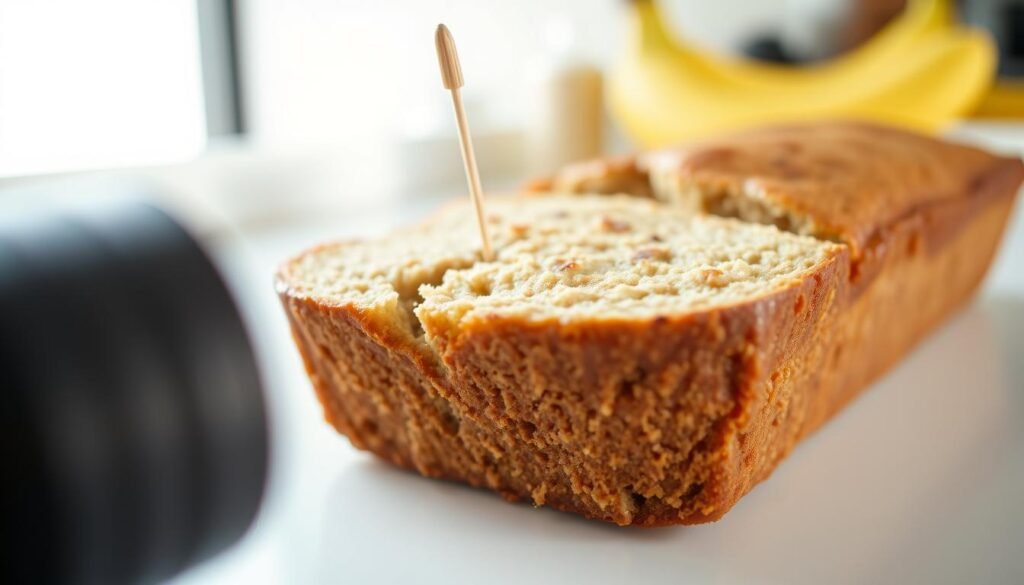
| Action | Why | Timing |
|---|---|---|
| Rack low | Prevent over-browning | Before baking |
| Toothpick check | Confirm center set | At 55–65 minutes |
| Cool in pan, then rack | Stabilize crumb & avoid soggy bottom | 10 minutes in pan, then until cool |
Secrets to Ultra-Moist Texture
A few targeted tricks for ingredients and handling will turn a good loaf into a bakery-style one.
Use very ripe fruit; avoid overmixing
Choose very ripe bananas with deep speckling. They mash smoothly and add concentrated flavor and moisture to the batter.
Whisk dry ingredients separately, then fold gently. Stop when you no longer see dry streaks to protect the crumb from becoming tough.
Brown sugar magic and room-temperature ingredients
Brown sugar locks in extra hydration and deepens flavor. Cream it with softened butter so the loaf keeps a tender texture for days.
Bring eggs, dairy, and butter to room temperature so the batter emulsifies evenly and the rise is stable.
Optional boost: sour cream or yogurt
Add about 1/3 cup plain sour cream or yogurt for a reliable, small moisture boost. It keeps the interior plush without weakening structure.
- Measure flour by spoon-and-level to avoid a dry batter.
- Lightly sprinkle brown sugar on top for a soft, caramelized crust.
- Tent with foil if the top colors too fast and let the loaf rest after baking so juices redistribute.
| Action | Why | Result |
|---|---|---|
| Cream butter & brown sugar | Incorporates air | Tender, even crumb |
| Fold, don’t overmix | Prevents gluten overdevelopment | Soft, not tough |
| Add 1/3 cup sour cream | Extra fat and acid | Velvety texture |
Ingredient Swaps and Healthy Tweaks
Small ingredient swaps can change nutrition and texture without derailing your loaf.
Honey for sugar: Replace some or all of the sugar with an equal amount of honey for a natural sweetness and a subtle floral note. Reduce other liquids slightly when using honey since it adds moisture.
Whole wheat and flax: Swap 25–50% of the all-purpose flour with whole wheat to boost fiber and heartiness. For added nutrition, replace 1 tablespoon of flour with 1 tablespoon of ground flaxseed in the dry mix; it gives a mild, nutty flavor and more omega-3s.
Nut-free and dairy-flexible options: Omit walnuts and raisins for a nut-free loaf. Use chocolate chips for texture instead. Swap yogurt for sour cream or choose a dairy-free yogurt to keep the crumb soft when you need a vegan-friendly option.
Keep baking soda and salt amounts the same to preserve rise and balance. If your bananas are very ripe, try reducing added sugar slightly and taste the batter for sweetness before baking.
| Swap | Why | Ratio / Tip | Result |
|---|---|---|---|
| Sugar → Honey | Natural sweetener; subtle floral note | 1:1 by volume; cut other liquids 2–3 tbsp per cup honey | Softer crumb, richer flavor |
| Part whole wheat flour | More fiber and depth | Start 25–50% substitution | Heartier loaf; keep at 50% or less for texture |
| Flour → Ground flaxseed | Nutrition boost; nuttier taste | Replace 1 tbsp flour with 1 tbsp flax | Extra fiber and subtle nutty note |
| Omit walnuts (nut-free) | Allergy-friendly | Use chocolate chips or raisins instead | Maintains texture without nuts |
For a deep dive on balancing swaps while keeping great texture, see this handy tip on the best trick for moist banana bread.
Flavor Upgrades and Mix-Ins
A few smart mix-ins make each slice feel layered and bakery-worthy.
Crunch, chew, or melt: stir 3/4 cup chopped walnuts or pecans into the batter for toasty contrast. If you want pockets of sweetness, fold in about 1 cup of chocolate chips; a mix of semisweet and milk chocolate balances richness and sweetness.
Whisk a pinch of cinnamon into the dry mix to add warm depth. For chewy notes, toss in raisins— they play nicely with brown sugar and spice.
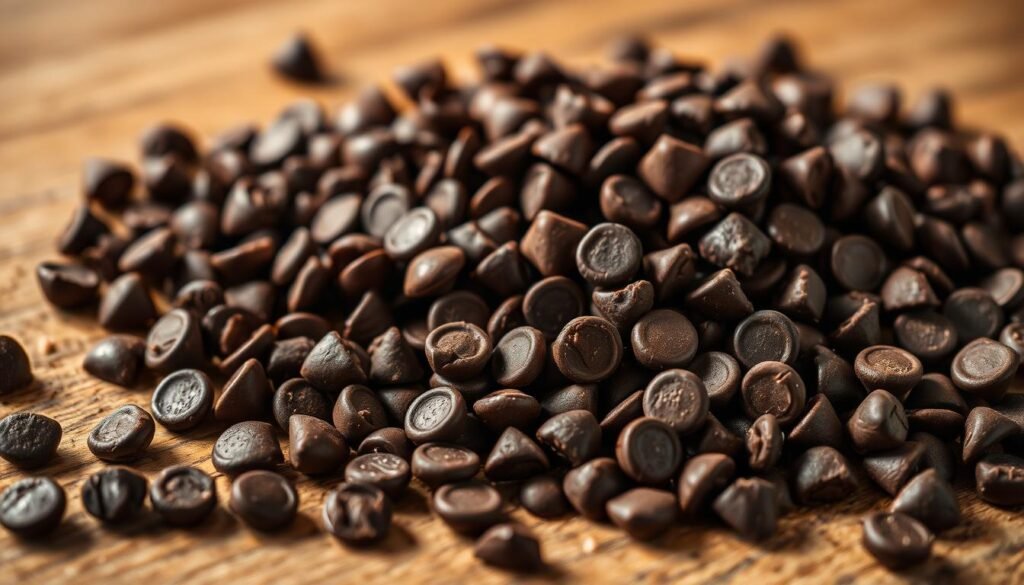
When and how to fold in chips and nuts
Fold add-ins at the very end with a spatula so you keep air in the batter and avoid a dense loaf. Toss chips or nuts with a teaspoon of flour first; this helps prevent sinking during baking.
- Measure so additions don’t overwhelm: 3/4 cup nuts and/or about 1 cup chips are balanced.
- Add extra chips or a brown-sugar sprinkle on top just before baking for a pretty finish.
- Note: mix-ins can add a few minutes to bake time—use a toothpick to check the center is set.
| Add-in | Amount | Why it works |
|---|---|---|
| Walnuts or pecans | 3/4 cup, chopped | Crunch and toasty contrast to the soft crumb |
| Chocolate chips | About 1 cup | Melty pockets of chocolate for richness |
| Raisins + Cinnamon | 1/2 cup raisins; 1/2–1 tsp cinnamon | Candy-like chew and warm spice |
Ripening, Freezing, and Storing Your Banana Bread
Master quick ripening, smart freezing, and shelf-stable storage so every slice stays delicious.
Ripen bananas fast: oven and paper bag methods
Speed-ripen in the oven: Place whole bananas on a sheet and bake at 250°F for about 15–20 minutes. They’ll darken and soften; cool before mashing.
For a gentler approach, put fruit in a paper bag with an apple and leave it for roughly 24 hours. The added ethylene speeds ripening without heat.
Freeze bananas and the baked loaf like a pro
Freeze ripe bananas either unpeeled or peeled for up to 3 months. Thaw in the fridge or at room temperature and drain excess liquid before measuring.
Cool a baked loaf fully, wrap tightly in plastic, then foil. Freeze whole or slice for quick weekday thawing. Label with date and any add-ins.
Store at room temperature in an airtight container
Short-term storage: Keep your loaf at room temperature in an airtight container to retain crumb and flavor.
Avoid refrigeration — cold speeds staling. Thaw frozen slices at room temperature; they relax and taste fresh in a short time.
- Speed-ripen: oven 250°F, 15–20 minutes.
- Paper bag trick: add an apple for a 24-hour boost.
- Freeze bananas and loaves up to 3–4 months; thaw at room temperature.
| Item | Method | Storage time |
|---|---|---|
| Ripe bananas | Freeze peeled/unpeeled | Up to 3 months |
| Baked loaf | Wrap plastic + foil | 3–4 months |
| Slices | Freeze individually | Faster thawing for single servings |
Troubleshooting Texture and Bake Issues
Dense crumb or a raw center? A few targeted adjustments will rescue your next loaf.
If it’s too dense or underbaked
Check your batter handling first. Mix only until dry streaks vanish so gluten stays relaxed. If the crumb is tight, cut mashed fruit to about 1.5 cups and confirm your baking soda is fresh and measured accurately.
If the center tests underdone, return the pan to the oven and bake in 5-minute increments. Recheck with a toothpick for moist crumbs, not a wet smear.
Prevent over-browning and gummy centers
Position the rack in the lower third and tent loosely with foil if the top colors too fast. Let the loaf rest in the pan about 10 minutes, then move it to a rack so steam does not condense and make the bottom gummy.
Add a pinch more salt only if the flavor seems flat; salt brightens banana and brown sugar and balances sweetness.
- Measure flour by spoon-and-level to avoid a heavy batter.
- Use the correct pan size; odd pans change bake time and center set.
- Keep notes on oven time and fruit ripeness to tighten your process.
| Problem | Likely cause | Quick fix |
|---|---|---|
| Dense crumb | Overmixing or too much fruit | Stir less; use ~1.5 cups mashed fruit |
| Undercooked center | Low oven temp or small pan | Bake in 5-minute increments; check with toothpick |
| Burnt top, raw middle | Rack too high | Lower rack, tent with foil at 30–40 minutes |
Conclusion
Conclusion
Make this your go-to banana bread recipe. Measure carefully, mix gently, and bake at 350°F in a greased 9×5 loaf pan for about an hour. Test with a toothpick — aim for a few moist crumbs, not a wet smear.
Keep pantry basics on hand: all-purpose flour, baking soda, eggs, butter, sugar, and vanilla. Use 3–4 cups of very ripe fruit as the flavor base and fold in chocolate chips or nuts near the end.
Cool in the pan for 10 minutes, move to a wire rack, then store at room temperature in an airtight container. Freeze slices for quick mornings and note minutes and add-ins so you can repeat your best loaf.
